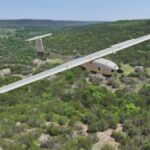
DoD research chief Heidi Shyu, in a possibly unintentional play on words, said on Oct. 18 that hypersonic weapons are just one "arrow" in the Pentagon's quiver against high technology adversaries--China and Russia--while Rep. Doug Lamborn (R-Colo.) said that he believes that the United States needs to achieve "hypersonic parity" with China. "It's important to understand that we have a portfolio approach," Shyu said during The Hill's hypersonics virtual forum sponsored by Raytheon Technologies [RTX]. "We look at targets of…














